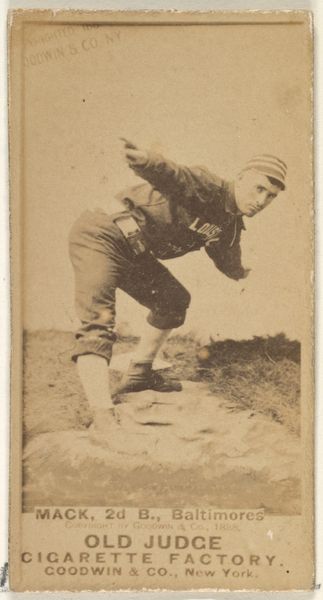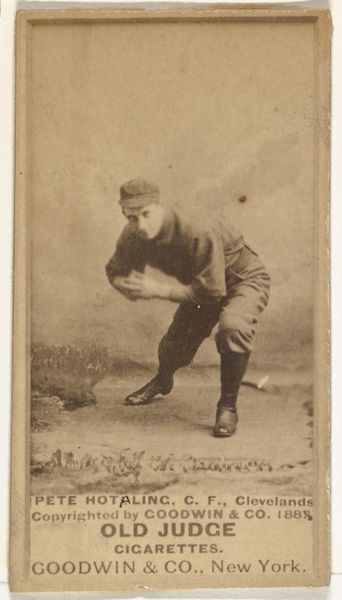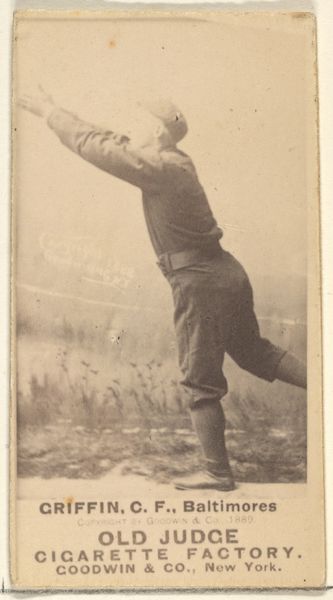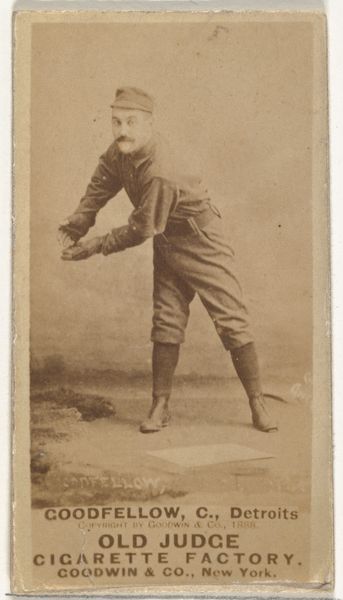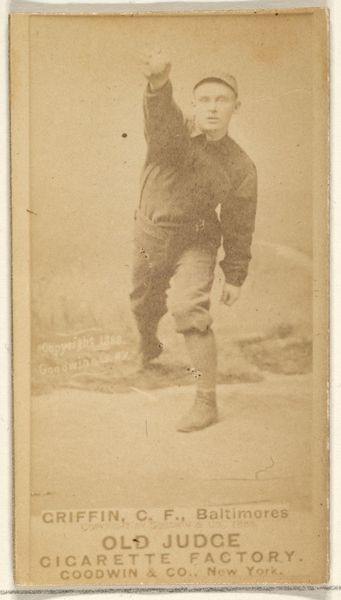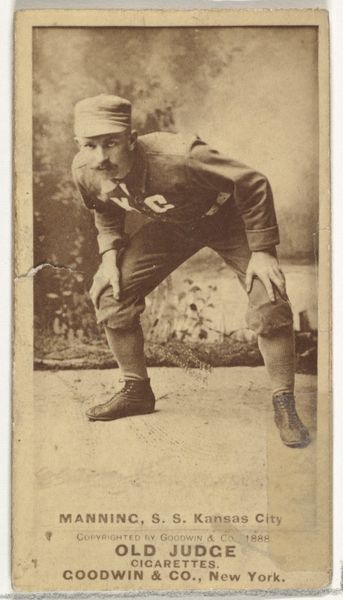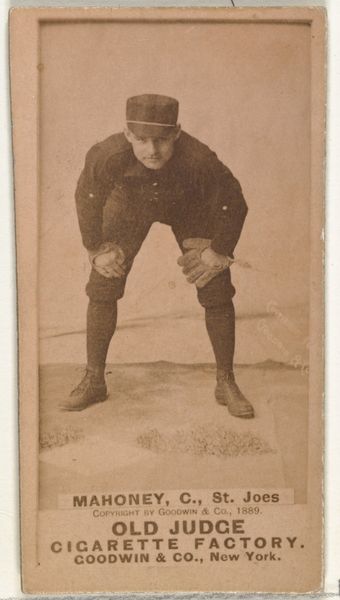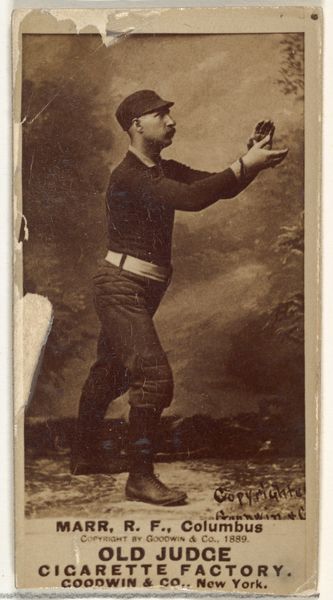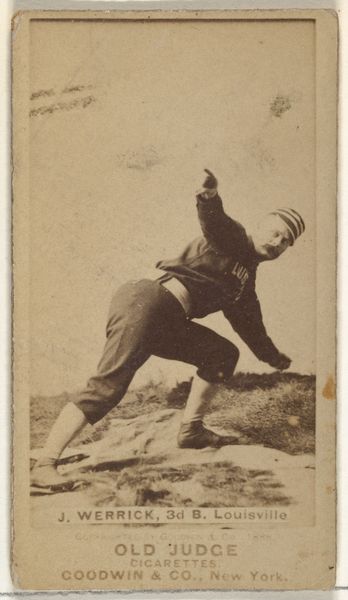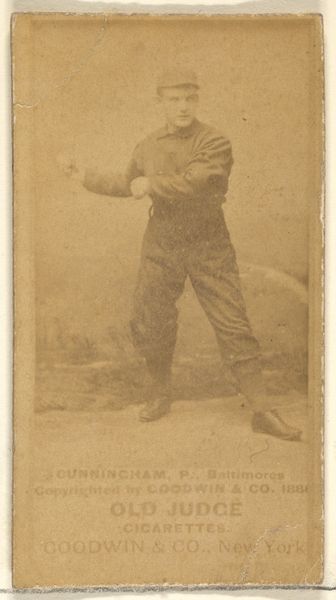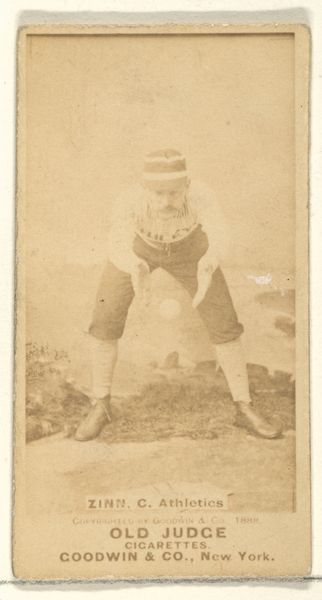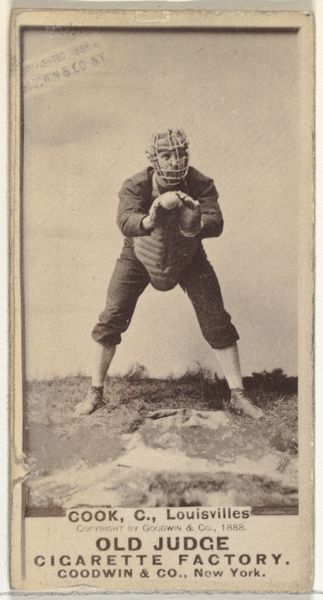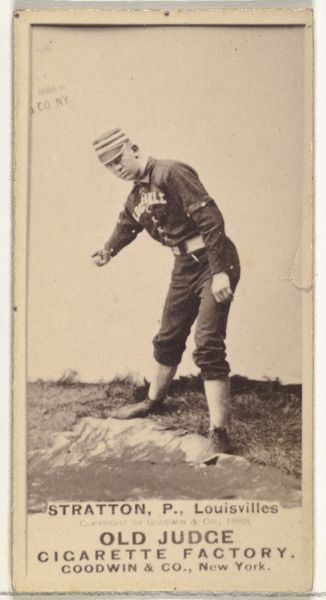
Joseph "Reddy" Mack, 2nd Base, Louisville Colonels, from the Old Judge series (N172) for Old Judge Cigarettes 1888
0:00
0:00
drawing, print, photography
#
portrait
#
drawing
#
ink painting
# print
#
photography
#
men
Dimensions: sheet: 2 11/16 x 1 3/8 in. (6.9 x 3.5 cm)
Copyright: Public Domain
Curator: Immediately, the sepia tones evoke a strong sense of nostalgia and something undeniably vintage. The way the subject's body is tensed—he's ready to make a play. Editor: This is a card featuring Joseph "Reddy" Mack, the 2nd baseman for the Louisville Colonels, dating back to 1888. It's part of the "Old Judge" series (N172) by Goodwin & Company, originally included in Old Judge Cigarettes packs. The image itself would have been created through photography, then reproduced using printing techniques. Curator: Knowing that it was an item within cigarette packs gives us such different insight; these baseball cards were like, almost incidental, right? What's intriguing to me is that juxtaposition of athletics and something so explicitly associated with working class social culture at that moment: cigarettes. Editor: Absolutely, that material reality frames everything. The cards weren’t just celebrating athletic skill, they were driving sales. This mass production reveals a great deal about the intersection of leisure, consumption, and industrial printing. We see photography and printing working together as the media landscape evolves, but at the expense of labor—both literal factory production and more insidious issues of what labor will go to these "luxury" items versus things more fundamental to life. Curator: Thinking about the subject position is complex too, as Mack had quite a short career and seemingly little personal information that could be dug up nowadays, adding to the intrigue and prompting interesting intersectional questions on why particular histories and figures rise to public light, while many others stay hidden. This image, within that context, now stands in as a symbol of historical inequities surrounding who gets to be seen and remembered. Editor: Precisely. That's where art and social life are clearly intertwined. The physical object of the card connects labor to portraiture, revealing dynamics of early consumer culture and even challenging notions of photography's relationship to the every-day. Curator: Thinking about how these material artifacts shape narratives about labor and social identity, in their own small way, adds invaluable historical depth and provides crucial context on art historical power structures. Editor: It truly grounds these glimpses into social history, prompting questions about where the baseball cards were produced, who did the printing, and the social cost of making the Old Judge cigarettes affordable to a consumer base that may well have not had much disposal income.
Comments
No comments
Be the first to comment and join the conversation on the ultimate creative platform.
